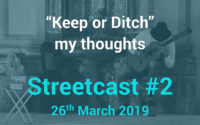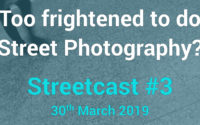Movement and Posture, & its Context in Street – Streetcast #1 – 21st March 2019
There is more than light that meets the eye when we see a scene. One of our most secretive of senses is the detection and interpretation of peoples movement.
Indeed this is used by police and security the world over to recognise a threat, or by customs to decide who to check. It is one of the reasons disabled people come across as different and we notice.
Noticing unusual movement and posture is not being nasty, it is just a sense that helps us identify possible risks and this can be put to good use with street photography too.
How someone moves, how someone positions themselves or stands can make a great difference on how an image comes together.
A child running in a dress has a different dynamic compared to a slow priest or nun with similarly flowing gown.
A scene and its composition in street photography is a combination of many components. The ease, awkwardness or strangeness in a persons movement or posture can make the difference in lifting the image to something special.
The background for context and depth to the story. The gestures, stance or movement of the person or people for the core of the story.
Even those preferring to ignore the face and use the subject as an organic context and scale are affected. If anything a face distracts from the movement or posture element because of our natural affinity to faces first.
Slouching in a suit; running in a wedding gown; awkwardly holding a phone in the air to get a signal are all visible stories without a face being necessary or desirable.
Too much onus is placed on a persons face for a story. A policeman in full riot gear including gas mask says more about the tension and expectations of a street riot, compared to a similar image where the faces of the police are visible.
In addition the situation with riot gear and gas masks is more likely to have the police with a dominant stance or have them move more deliberately. And this can be reflected in still images if the timing is right.
So next time you are out looking for interesting scenes consider watching peoples movement and their posture.
Such things can lead to images that just come together and reflect a better story, assuming of course you notice and you get the timing right.



